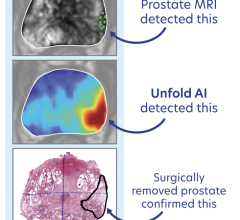November 2, 2016 — A new report on Swedish men with non-aggressive prostate cancer suggests a lot more American men could safely choose to monitor their disease instead of seeking immediate radiation treatment or surgery.
Published in the JAMA Oncology online Oct. 20, the report shows that well over half of 32,518 men in Sweden diagnosed with prostate cancers least likely to spread chose monitoring during a recent, five-year period over immediate treatment.
Led by researchers at NYU Langone Medical Center and its Perlmutter Cancer Center, an international team concluded that men are likely to choose monitoring once presented with the choice.
Called active surveillance, the monitoring option relies on regular blood tests, physical exams and the periodic biopsy, or sampling, of prostate tissue to screen for any signs of a tumor’s growth before therapy is considered. The move to active surveillance, say the study authors, averts the risk of sexual dysfunction, as well as bowel and bladder problems that frequently accompany traditional therapies.
“The main conclusion here is that if the majority of men in Sweden have adopted this management strategy for very low- to low-risk prostate cancer, then more American men might choose this option if it were presented to them,” said lead study investigator and urologist Stacy Loeb, M.D., MSc.
Among the study’s key findings was that from 2009 to 2014, the number of Swedish men with very low-risk cancer choosing active surveillance increased from 57 percent to 91 percent, and men with low-risk cancer choosing this option rose from 40 percent to 74 percent. Meanwhile, the authors report, the number of men in both groups who chose to simply wait, do no further testing and postpone therapy unless symptoms develop — a passive practice called watchful waiting — dropped by more than half.
For the study, researchers analyzed data from Sweden’s National Prostate Cancer Register, one of the few such national databases in the world (and for which nothing comparable exists in North America).
Loeb, an assistant professor in the urology and population health departments at NYU Langone, and a member of Perlmutter, said that while increasing numbers of American men diagnosed with early-stage disease are choosing active surveillance, they still account for less than half of those for whom it is an option.
“Our findings should encourage physicians and cancer care professionals in the United States to offer such close supervision and monitoring to their patients with low-risk disease,” said Loeb. More American men opting for active surveillance, she added, “could go a long way toward reducing the harms of screening by minimizing overtreatment of non-aggressive prostate cancer.”
Loeb said recent studies have suggested that some men with early-stage disease who opted for treatment later regretted it because of lingering problems, such as incontinence and impotence.
A large study also recently showed no difference in death rates a decade after diagnosis between those who chose active surveillance and those who chose immediate treatment, Loeb said. Meanwhile, there is a greater risk of side effects among men undergoing therapy. She cautioned, however, that this pattern has not been confirmed for the Swedish men in the current study.
The U.S. National Cancer Institute estimates that 26,000 American men will die from the disease in 2016, with 181,000 getting diagnosed, most in its earliest stages.
Funding support for the study, which took two years to complete, was provided by grants from the Swedish Research Council (825-2012-5047) and the Swedish Cancer Society (130428). Additional funding support was provided by the Laura and Isaac Perlmutter Cancer Center and the Louis Feil Charitable Lead Trust.
Besides Loeb, another NYU Langone investigator involved in the study was Caitlin Curnyn, MPH. Other study investigators were Yasin Folkvaljon, MSc, at the Regional Cancer Center at Uppsala University in Uppsala, Sweden; David Robinson, M.D., Ph.D., at Ryhov County Hospital in Jonkoping, Sweden, and Umea University in Umea, Sweden; Ola Bratt, M.D., Ph.D., at Addenbrooke’s Hospital in Cambridge, England, and Lund University in Lund, Sweden; and principal investigator Pär Stattin, M.D., Ph.D., at both Uppsala University and Umea University.
For more information: www.jamanetwork.com/journals/jamaoncology


 April 17, 2024
April 17, 2024 








